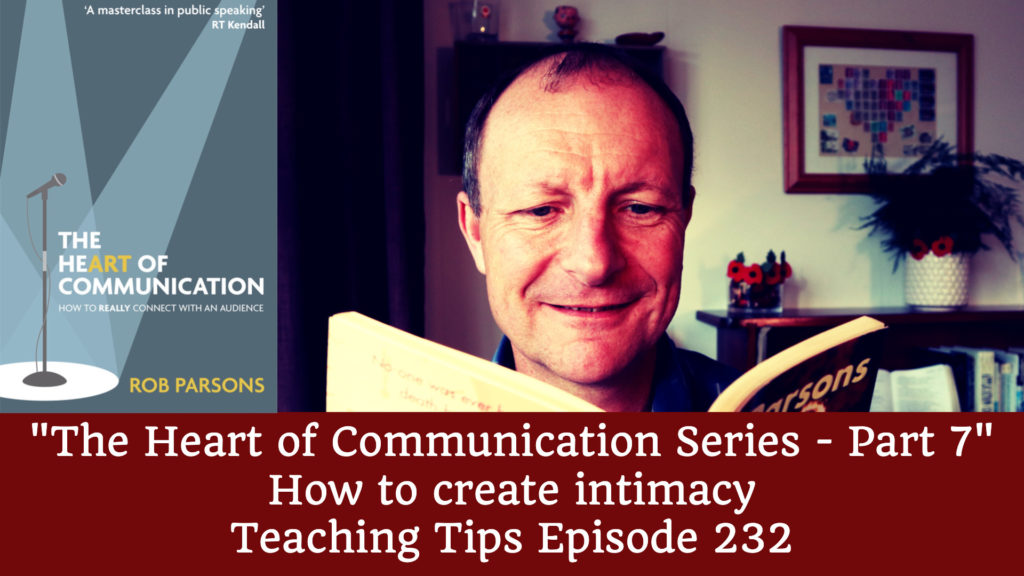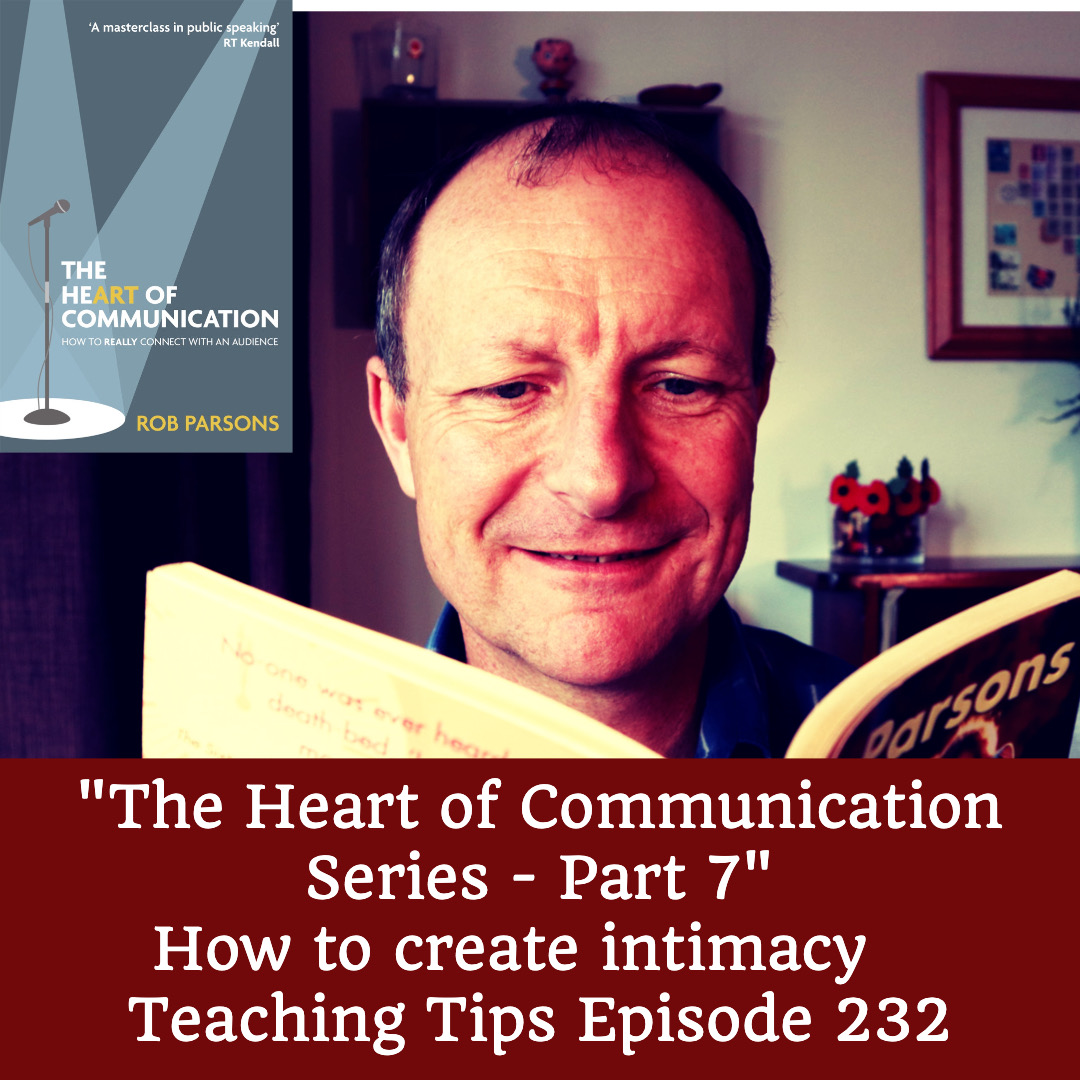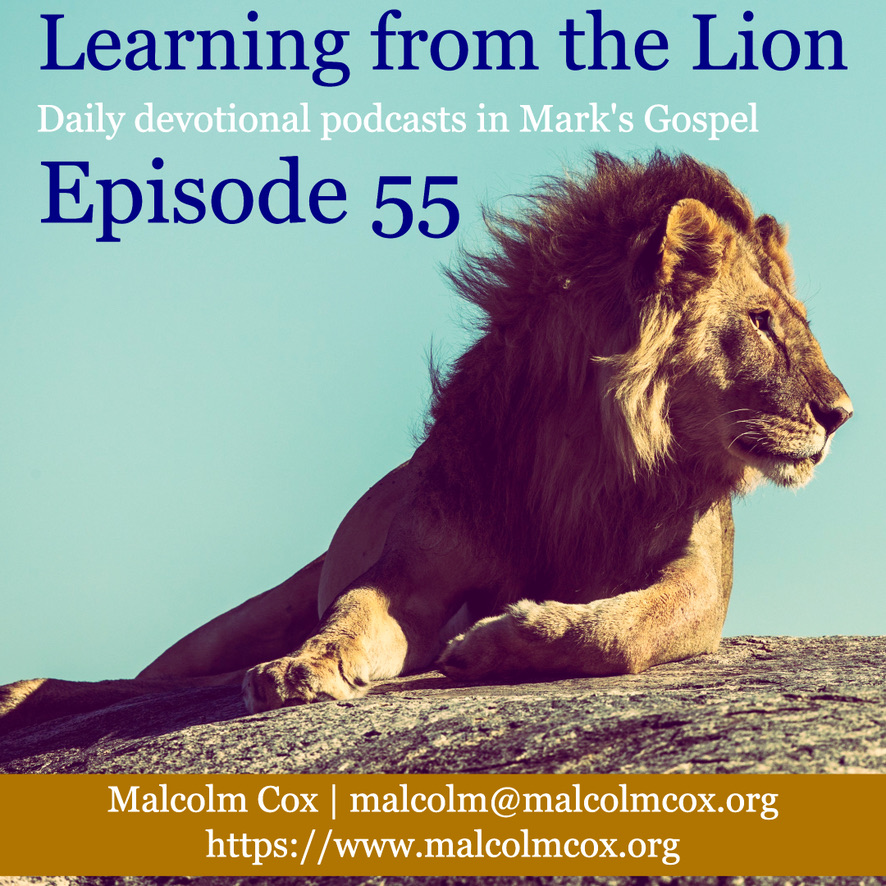The Heart of Communication – Part 7, Tuesday Teaching Tips Episode 232

Introduction
“Those who are willing to be vulnerable move among mysteries.” Theodore Roethke Parsons, Rob. The Heart of Communication: How to really connect with an audience . John Murray Press. Kindle Edition.
- We are never speaking to a group. We are speaking to individuals who happened to be making up a group at the time we are speaking to them.
- Effective public speaking happens when individuals feel connected to you. There is a certain kind of intimacy a speaker can develop with those listening which is almost mystical.
- I don’t believe this can be manufactured as such. At least, not in the spiritual context if we are going to remain sincere. However, there are a number of aspects to consider which can help or hinder our effectiveness.
1. Speak to individuals
“..the greatest compliment you can pay another person when you are talking with them is to look in their eyes.”
- Don’t stare, but do look into peoples eyes. Just a few seconds is enough.
- Don’t forget the people at the back, on the balcony, or off to the extreme side of the room.
- Move your body to face people, not just your eyes.
- If, like me at the moment, you are doing all your speaking on Zoom, bear these points in mind.
- Look directly into the camera most of the time, not at your picture on screen. Until I got used to this, I put a post-it note at the top of my monitor above the built-in WebCam with a 🙂 drawn on it.
- Look away from the camera from time to time. Too much staring in the same direction will be too intense for the people on the receiving end.
- Arrange your background so that it is not distracting. You cannot create intimacy if there is a mess behind you.
- Pause from time to time. In the earlier days of speaking online I found myself compelled to keep the flow going. This was motivated by a fear that I would lose people’s attention. I’ve since learned to relax, trust the material and the people listening. Pauses help your audience to maintain their attention.
- If you can, keep the group you are speaking to visible on screen.
2. Imagine it’s a dialogue
“…an effective public speaker has to imagine the comments and questions coursing through their listeners’ minds and try to address them.”
Spend some time before your talk imagining the questions people might have regarding your topic. If you’re speaking on prayer, you will need to be aware of the fact that some people in the congregation will have prayed sincerely but not seen their prayers answered. What will you say if you talk about answered prayer, when you are ‘hearing’ the objections from those who have not seen their prayers answered?
It is wise to prepare for this, but also to remain spiritually sensitive during your lesson. The Spirit will speak to you and help you to hear what people are thinking and feeling.
“Good public speaking is a two-way conversation with the speaker playing both parts.”
It’s a much healthier perspective to see your talk as a conversation than a monologue.
3. Don’t be afraid to be vulnerable
“.. it is extremely powerful when a speaker allows an audience to see some inner part of their life; people admire you for your strengths but connect with you in your weaknesses.”
Vulnerability is a valuable tool, but must be used with sensitivity. Do not use openness about your personal life to make your audience feel sorry for you. Or, even worse, intimidated by you. It will not help those in the congregation if you are the person with the best story or the worst story in the room.
Be vulnerable as a way to make your content meaningful, applicable and clearly useful in a personal sense. Your openness will create intimacy, and help people to see you as a human being, not as a “Speaker”.
Some further observations
- Intimacy with your audience is largely a function of your sensitivity to them and their needs. If the room is hot or cold, or if they just had lunch – all these things make a difference. Serve your congregation by adjusting your talk to create the best possible intimacy given the circumstances.
- Don’t be put off by extreme reactions. You might have someone scowling at you the whole time. It does not necessarily mean they don’t like your talk. The first time I preached in front of my father he sat on the front row and closed his eyes. I thought he was asleep. Afterwards I plucked up the courage to ask him what he thought. It turned out that he was closing his eyes so that he could concentrate better. I was very relieved!
- Incorporating interaction during your talk can be a way to help create intimacy. Ask a question, get a short conversation going, ask for some feedback while you’re speaking. All of this can be useful. However, do not allow one person to dominate.
Conclusion
- Creating intimacy is something Jesus did wonderfully well. People felt he was speaking to them personally. That helps explain the strong reactions people had to him. Some jumping for joy, others wanting to kill him!
- Creating and sustaining intimacy during a talk is an art more than a science. It’s something you learn to do better and better as the years talking in front of people accumulate. Pray and ask God to give you a spirit of sensitivity to help you to grow in awareness of the state of intimacy and to help you develop it.
Questions: What in your experience helps create intimacy with an audience?
Please add your comments on this week’s topic. We learn best when we learn in community.
Do you have a question about teaching the Bible? Is it theological, technical, practical? Send me your questions or suggestions. Here’s the email: malcolm@malcolmcox.org.
If you’d like a copy of my free eBook on spiritual disciplines, “How God grows His people”, sign up at my website: http://www.malcolmcox.org.
Please pass the link on, subscribe, leave a review.
“Worship the LORD with gladness; come before him with joyful songs.” (Psalms 100:2 NIV11)
God bless, Malcolm
PS: You might also be interested in my book: “An elephant’s swimming pool”, a devotional look at the Gospel of John

